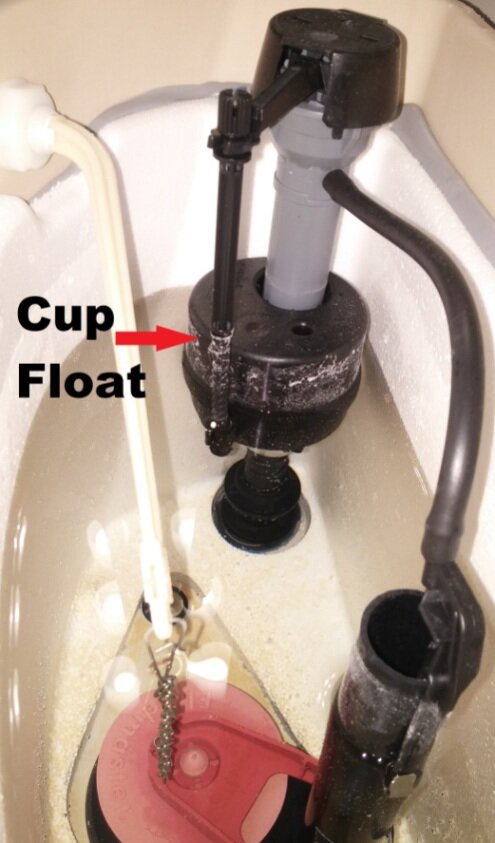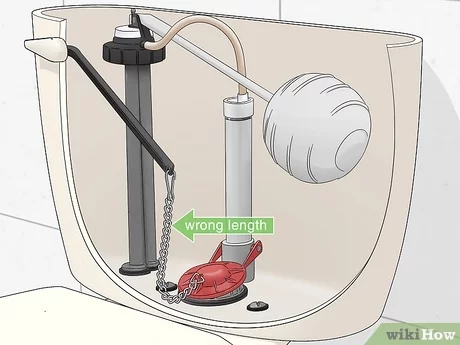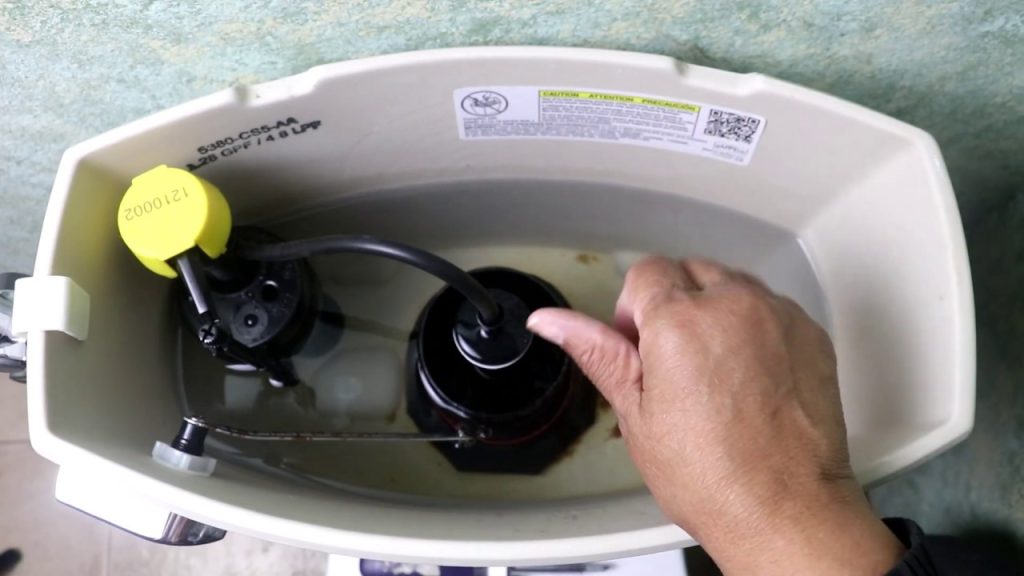Fixing a running toilet doesn’t have to be hard. Often, the solution is simple and quick.
A running toilet can waste a lot of water. This problem also raises your water bill. Understanding how to fix it can save you money and prevent water waste. In this guide, you will learn the steps to stop your toilet from running.
Whether it’s the flapper, fill valve, or another issue, we’ll cover it. By the end, you will know how to fix the problem and keep your toilet working properly. Let’s get started on making that annoying running toilet a thing of the past.

Credit: www.youtube.com
Identify The Problem
Fixing a running toilet can seem like a daunting task. Before diving into repairs, it’s crucial to identify the problem. Understanding the root cause will save you time and effort. Let’s take a closer look at common issues and how to perform an initial inspection.
Common Causes
Several factors can cause a toilet to run. Here are some of the most common culprits:
- Faulty flapper: The rubber valve that seals the tank can wear out or get misaligned.
- Float issues: The float may not be adjusted properly, affecting the water level.
- Fill valve problems: The fill valve may not shut off completely, causing continuous water flow.
- Chain issues: The chain connecting the flush lever to the flapper may be too short or too long.
Initial Inspection
Begin your inspection by lifting the lid off the toilet tank. Check the water level inside the tank. It should be about an inch below the overflow tube. If the water level is too high or low, you may have a float issue.
Next, inspect the flapper. Ensure it is sealing properly. If it appears worn or damaged, it might need replacing. Check the chain connected to the flapper. It should have a little slack but not too much.
Examine the fill valve. Look for signs of wear or malfunction. If the fill valve is constantly running or leaking, it may need adjustment or replacement.
By conducting a thorough initial inspection, you can pinpoint the exact cause of the running toilet. This will guide your repair efforts and help you fix the problem efficiently.
Turn Off The Water Supply
Fixing a running toilet can save water and lower your bill. One of the first steps is to turn off the water supply. This prevents more water from entering the toilet tank. Follow these steps to handle this crucial part of the repair process.
Locate The Shut-off Valve
The shut-off valve is usually found near the toilet base. Look for a small knob or lever on the wall or floor behind the toilet. It may also be on the pipe connecting the toilet to the wall.
| Location | Description |
|---|---|
| Behind the toilet | Near the base, connected to the wall or floor |
| On the pipe | Connecting the toilet to the wall |
Steps To Turn Off Water
- Find the shut-off valve near the toilet base.
- Turn the valve clockwise to stop water flow.
- Flush the toilet to empty the tank.
- Check the tank to ensure no water is entering.
If the water still flows, the valve might be faulty. In such cases, you may need to replace it. But first, make sure the valve is turned off properly.
Check The Flapper
A running toilet can be annoying and wasteful. One common cause is a faulty flapper. The flapper is a rubber valve at the bottom of the tank. Its job is to seal the tank and stop water from flowing into the bowl. If the flapper is damaged, it can cause your toilet to keep running.
Flapper Issues
Flapper issues can vary. The flapper may not seal properly. It could be warped or cracked. Sometimes, mineral buildup can prevent it from closing. Here are some signs of flapper problems:
- Toilet makes a hissing sound
- Water constantly flows into the bowl
- Flapper looks worn out or damaged
How To Replace The Flapper
Replacing the flapper is easy. Follow these steps:
- Turn off the water supply to the toilet.
- Flush the toilet to empty the tank.
- Remove the old flapper from the chain and hinges.
- Clean the area around the flapper seat.
- Attach the new flapper to the chain and hinges.
- Turn on the water supply and test the toilet.
Ensure the new flapper seals properly. Adjust the chain if needed. A properly installed flapper will stop the water from running.

Credit: www.wikihow.com
Examine The Fill Valve
Inspect the fill valve inside the toilet tank. Ensure it works correctly and adjusts the water level. This step helps stop the toilet from running.
A running toilet wastes water and increases your bill. The fill valve controls the water level in the tank. Examining it can solve the issue. Let’s look at common fill valve problems and how to fix them.Fill Valve Problems
A faulty fill valve can cause continuous water flow. Check for any debris or damage. Sometimes, the valve might be misaligned. This can prevent it from shutting off.Adjusting Or Replacing The Fill Valve
First, turn off the water supply. Flush the toilet to empty the tank. Adjust the fill valve according to the manufacturer’s instructions. If adjusting doesn’t help, consider replacing it. New fill valves are affordable and easy to install. Follow the steps in the manual for best results. “`Inspect The Float
A running toilet can waste a lot of water. One common cause is a problem with the float. The float controls the water level in the tank. If it’s not set correctly, the water keeps running. Here’s how to inspect the float.
Float Types
There are two main types of floats: ball floats and cup floats.
| Type of Float | Description |
|---|---|
| Ball Float | A ball at the end of a long arm. It rises and falls with the water level. |
| Cup Float | A small cup attached to the fill valve. It moves up and down with the water level. |
Adjusting The Float Level
The next step is to adjust the float level. This will ensure the water stops at the correct height.
- For ball floats: Bend the arm gently up or down. Up for a higher water level. Down for a lower one.
- For cup floats: Locate the adjustment screw. Turn it clockwise to lower the water level. Turn it counterclockwise to raise it.
Adjust in small increments. Check the water level after each adjustment.
A properly adjusted float will stop the water from running. It saves water and money.
Look For Leaks
Is your toilet running continuously? It can be annoying and wasteful. The first step in fixing a running toilet is to look for leaks. Identifying the source of the leak can save water and money. Here’s how you can do it.
Testing For Leaks
To start, you need to test for leaks. Follow these steps:
- Remove the toilet tank lid.
- Drop a few drops of food coloring into the tank.
- Wait for 15-20 minutes without flushing.
- Check the bowl for colored water.
If you see colored water in the bowl, you have a leak. This simple test can help you pinpoint the problem.
Fixing Minor Leaks
If you detect a minor leak, you might not need a plumber. Here are some easy fixes:
- Adjust the flapper: Ensure the flapper seals the tank properly. If it’s worn out, replace it.
- Check the chain: Make sure the chain is not too tight or too loose. Adjust its length if needed.
- Inspect the fill valve: The fill valve might need cleaning or replacement. Follow the manufacturer’s instructions.
These steps can often stop a running toilet. Regular maintenance can prevent future leaks.
Reassemble And Test
Once you have identified and fixed the root cause of the running toilet, it’s time to reassemble and test the toilet. This step ensures that everything is working correctly and helps prevent future issues. Follow these steps to get your toilet back in working order.
Reassembling The Parts
Start by reassembling the toilet parts that were removed or adjusted. This includes the flapper, fill valve, and any other components you might have worked on.
- Reattach the flapper to the flush valve. Make sure it sits properly and seals tightly.
- Reconnect the chain between the flapper and the flush lever. Adjust the chain length to ensure it is neither too loose nor too tight.
- Reinstall the fill valve if it was removed. Tighten it securely to prevent leaks.
- Reconnect the water supply line to the fill valve. Ensure it is tight and free of leaks.
Once all parts are reassembled, you can move on to testing the toilet.
Testing The Toilet
With everything back in place, it’s crucial to test the toilet to ensure it operates correctly.
- Turn on the water supply by opening the shut-off valve. Allow the tank to fill with water.
- Flush the toilet and observe its operation. Make sure the flapper closes properly and the tank refills correctly.
- Check for leaks around the base, fill valve, and other connections. Ensure there are no drips or puddles.
- Listen for any unusual sounds, such as continuous running water. This could indicate a remaining issue.
If everything seems to be working fine, congratulations! You have successfully fixed your running toilet. If you notice any problems, revisit the previous steps to identify and correct the issue.
When To Call A Plumber
Fixing a running toilet can be simple. But sometimes, the problem is bigger. Knowing when to call a plumber can save time and money. It also prevents further damage to your home.
Signs You Need Professional Help
Some issues need a plumber’s expertise. If you see water pooling around the toilet, call a plumber. Leaks can damage floors and walls. If the toilet keeps running after basic fixes, it may need professional care. Unusual noises, like gurgling, can signal a deeper problem.
If the toilet is clogged and plunging doesn’t help, it’s time to seek help. Repeated clogs can indicate a blockage in the main line. Also, if you notice a foul smell, it could be a sign of a sewer issue. These problems require a plumber’s tools and skills.
Choosing A Reliable Plumber
Choosing the right plumber is important. Check for licenses and certifications. These show that the plumber has the needed skills. Reading reviews online can help find trustworthy plumbers. Ask friends and family for recommendations too.
Get quotes from multiple plumbers before deciding. This helps you find a fair price. Ensure the plumber offers a warranty on their work. This guarantees quality service. Communication is key. Choose a plumber who explains the problem clearly.

Credit: www.watersmartsystems.com
Frequently Asked Questions
How Do I Stop My Toilet From Running?
To stop a running toilet, check the flapper valve. Ensure it seals properly. Adjust the float level to control water flow. Replace any worn-out parts.
Why Does My Toilet Keep Running Intermittently?
A toilet runs intermittently due to a faulty flapper, float, or fill valve. Inspect these components. Replace any damaged parts to fix the issue.
Can A Running Toilet Increase My Water Bill?
Yes, a running toilet can significantly increase your water bill. It wastes gallons of water daily. Fix it promptly to save money.
What Tools Do I Need To Fix A Running Toilet?
To fix a running toilet, you need a screwdriver, pliers, and replacement parts. Basic tools suffice for most repairs.
Conclusion
Fixing a running toilet doesn’t have to be hard. Identify the problem first. It might be the flapper, fill valve, or float. Gather your tools. Follow the steps we’ve outlined. Check your work. If it still runs, consult a plumber.
Regular maintenance can prevent future issues. Save water and money by fixing it promptly. A running toilet is easy to fix with patience. Stay calm, follow the guide, and you’ll succeed. Happy fixing!



